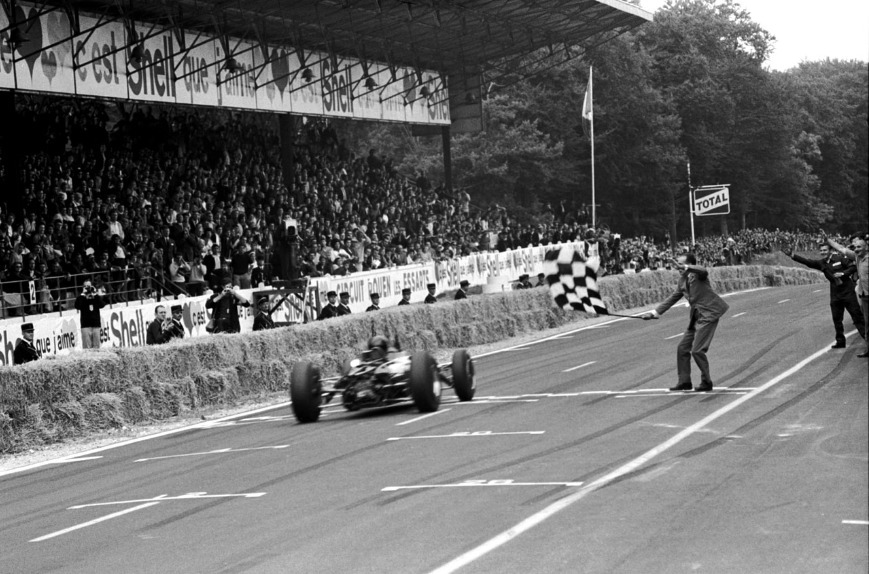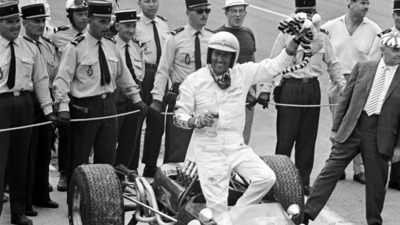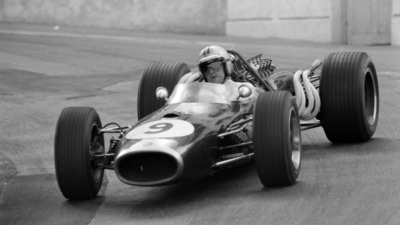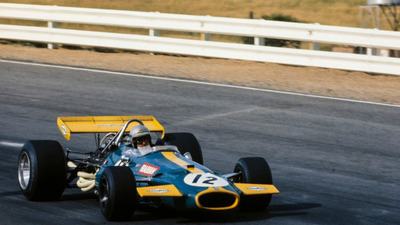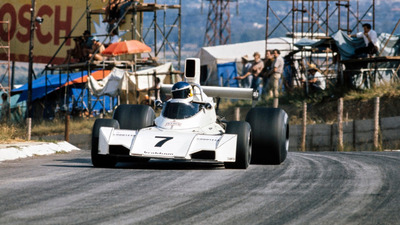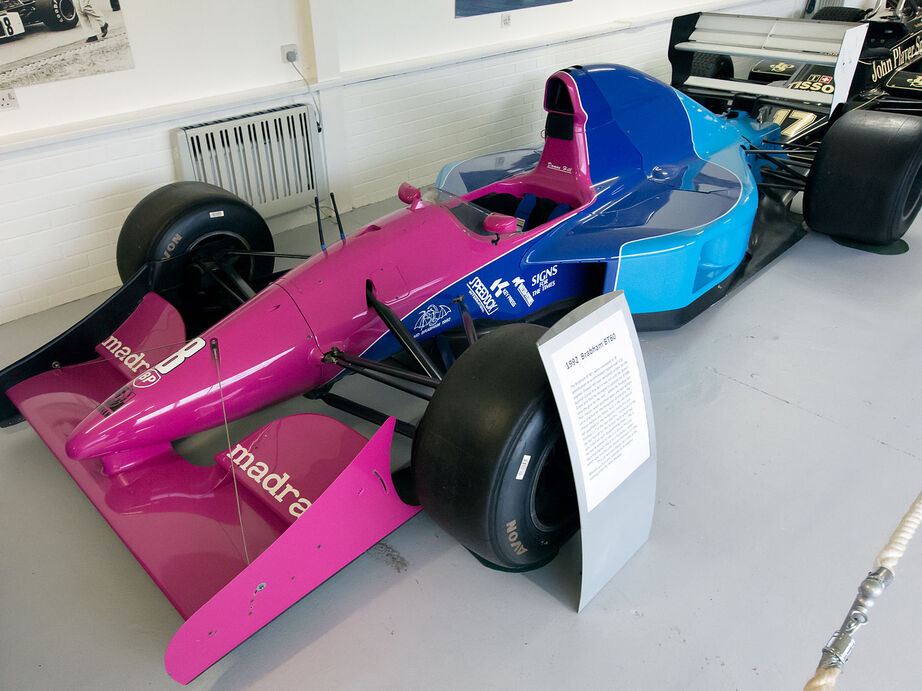Brabham // Motor Racing Developments

Chessington, England, United Kingdom
About
Founded in 1960 by Sir. Jack Brabham and Ron Tauranac, Brabham proved to be an successful team in Formula 1. It scored a total of 35 Grand Prix Victories, 4 WDC (1966, 1967, 1981 and 1983) and 2 WCC (1966, 1967). Some of the most known drivers are: Sir. Jack Brabham, Denny Hulme, Nelson Piquet, Dan Gurney, Jochen Rindt, Carlos Reutemann, Niki Lauda, John Watson, Riccardo Patrese.
Cars
Current (0)
Previous (127)
Most Likes
Most Spotted
Empty List
Timeline
1992
1991
1990
1989
1987
1986
1985
1984
1983
1982
1981
1980
1979
1978
1977
1976
1975
1974
1973
1972
1971
1970
1969
1968
1967
1966
1965
1964
1963
1962
1960
1992 was the final Formula 1 season for Brabham. They raced with the BT60 in two specifications, BT60B with a Judd V10, while the BT60Y powered by Yamaha's V12 engine. Brabham went into administration and RM Motorsports made attempts to get the team and race in 1993. The 1992 Hungarian Grand Prix (held on August 16th) was the final ever entry for Brabham in Formula 1.
Joachim Lüthi was arrested for tax fraud charges in 1989. So after a long dispute on ownership, it was Middlebridge Group Limited who ended up winning the team. Their 1990 season wasn't successful as expected, with a 5th place as their best race result. They raced in 1990 with Brabham BT59, powered by a Judd V8 engine, while in 1991 the BT59 was powered by Yamaha V8 engine. MIddlebrige was unable to continue with team's management as their went into bankrupt and were investigated for corruption charges.
After Bernie Ecclestone sold the team to Joachim Lüthi. Brabham returned in 1989 season with BT58. The car was powered by a Judd V8 engine.
Bernie lost interest in running the team in 1987, so he opted to sell the team to Joachim Lüthi. Brabham also didn't had an engine for 1988, as BMW and Brabham concluded their partnership, which left Brabham without engines and decided to not compete in 1988.
The 1985 saw the Brabham BT54 making its debut, like the BT53, the BT54 was built to have most part of the weight in the rear, which helped to improve the traction. After Michelin left in 1984, Bernie Ecclestone took the risk to use Pirelli tyres instead of Goodyear, which played against. Car was competitive enough to fight for wins, but the Pirelli tyres were nowhere from the Goodyear ones, plus the testings were in summer instead of winter. The Pirelli tyres proved that they could be good on high temperatures. However, on cold temperatures the tyres didn't work out. The team had a big chance (which successfully worked) to win a Grand Prix. However, it would be the 35th and last for Brabham. On July 7th 1985, Formula 1 went to Paul Ricard Circuit to dispute the French Grand Prix. It was a race held on hot conditions (favorable to Pirelli) plus the efficient aerodynamics gave Nelson Piquet his 13th win of his career, and Brabham's 35th victory. The BT55 wasn't as competitive as BT54, starting the downfall of the team.
After a frustrating 1982 season, where their best results were in Monaco and Canada, both Grand Prix victories. Brabham prepared the BT52 for the 1983 season. Nelson Piquet was once again fighting for the championship, this time against Alain Prost with Renault, and René Arnoux with Ferrari. Piquet's consistency put him on a very good position to win the WDC. However, things wouldn't be easy. Renault and Ferrari proved to be competitive that season. Things went up spicier at the end of the season, Murray being an innovative, incorporated a lot of innovations to the car. Brabham were the first team to use the pit stops as part of the strategy, as they pitted for fuel and tyres on strategical moments. For 1983, the BT52 featured a small fuel tank, which allowed them to save weight and use the pit stop strategies. Fuel was also the center of the controversy, as Brabham used to freeze the fuel, this allowing the fuel to be filled faster, putting a higher volume and having a better efficiency. But during the last races (Since the German Grand Prix to be specific, R10/15), Wintershall prepared a new fuel, nicknamed 'The Super Fuel', which was a mixture of 44% Alcohol and 56% LOX (Liquid Oxygen). This superfuel allowed Brabham to increase engine's power to over 1,000hp, but at same time it was fragile. The engine broke down at the German Grand Prix when the fuel felt over the turbo turning it up in flames, which forced Nelson to retire (he was running on top 3).
Brabham's first chance to fight for the championship since Bernie's acquisition came in 1981. Driving the BT49C, they were involved in a controversy, as the team was running with a hydropneumatic suspension. System debuted at 1981 United States Grand Prix West, but due temperature issues and materials choices, they ran a conventional suspension. The system was fixed and Nelson Piquet secured team's first win of the season during the 1981 Argentinian Grand Prix (where, short note, Nelson scored a Grand Chelem). Team was also involved in a controversy at the same Grand Prix, as Ligier, Renault and Williams leaded a protest against Brabham for the flexibility of the side skirts, which sealed the underside, this allowed the team to replicate the sliding skirt effect. The FISA declared that the system was completly legal as from FISA's perspective, there were no illegalities on the system. Some teams copied the hydropneumatic system as a spring and cylinder were stolen during the Argentinian Grand Prix. FISA made a rule change that made illegal the height change, which forced all team to run a conventional suspension. All this controversies were not an impediment to Nelson Piquet, which thanks to his consistency could earn the championship against Carlos Reutemann in Las Vegas.
After Tauranac disagreed with Ecclestone on multiple decisions, Tauranac sold his part of the team to Bernie Ecclestone, making him the sole owner of the team. He had a successful ownership until he sold the team.
Sir. Jack Brabham left the team (and retired from F1) at the end of 1970. Bernie Ecclestone bought the Brabham's part of the team, sharing the team's ownership at Tauranac.
Denny Hulme joined Brabham Team in 1965, driving the BT7, BT11, BT20 and BT22 models. On 1967 his big chance finally came. On the second race of the season in Monaco, he archived his first (of 8) Grand Prix Victories while driving the BT20, repeating the win at Germany driving the BT24. His consistency earned him the WDC (his only and team's 2nd), which alongside Brabham's 2 wins at France and Canada plus podium finishes at Netherlands, Germany, Italy and Mexico were enough to secure the 1967 WCC, which would be the 2nd and last for the team.
Two years later, in 1966. Brabham would have their first championships. Sir. Jack Brabham drove the BT19 and BT20 models during the 1966 season. With 4 Grand Prix Victories at France, Great Britain, Netherlands and Germany using the BT19, Brabham would archive his third (and last) Formula 1 WDC, as well team's first ever WCC.
1964 was a successful season for Brabham. Using the Brabham BT7, the team archived very good results, included their first podium finishes in 1963 during the Belgian Grand Prix (3rd OA), the 1963 Dutch Grand Prix (2nd OA), their first pole position at 1964 Dutch Grand Prix, but most importantly, in hands of Dan Gurney, the team got their first (of 35) Grand Prix victories during the 1964 French Grand Prix, held on June 28th. Gurney repeated the win during the championship definition at the 1964 Mexican Grand Prix, after taking the lead on the last lap when Jim Clark had a mechanical failure.
Team was founded in 1960 by Sir. Jack Brabham and Ron Tauranac. The first car under Brabham's name was the 1961 Brabham BT1, which was a Formula Junior car. Their Formula 1 debut was during the 1962 German Grand Prix using the Brabham BT3, their first Formula 1 car.
Videos
Empty List




